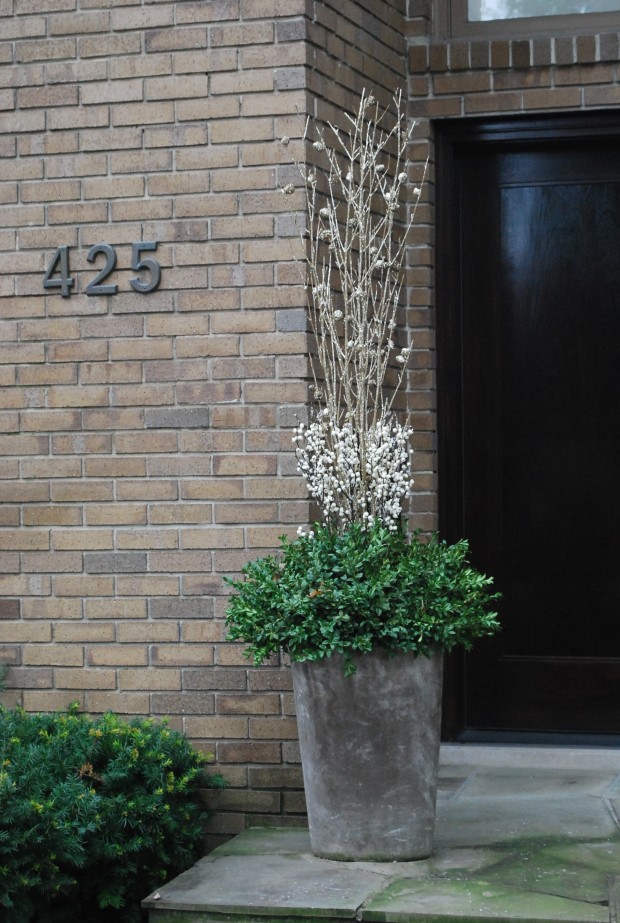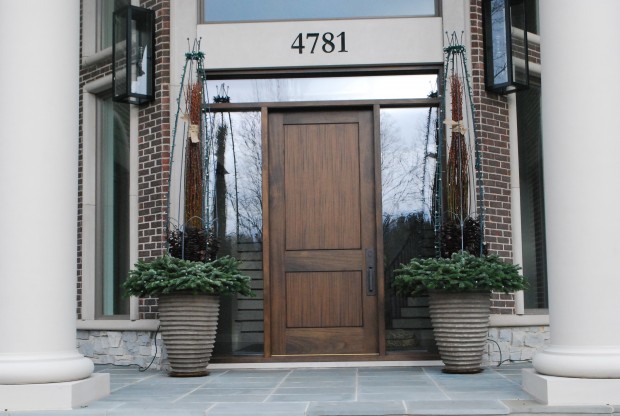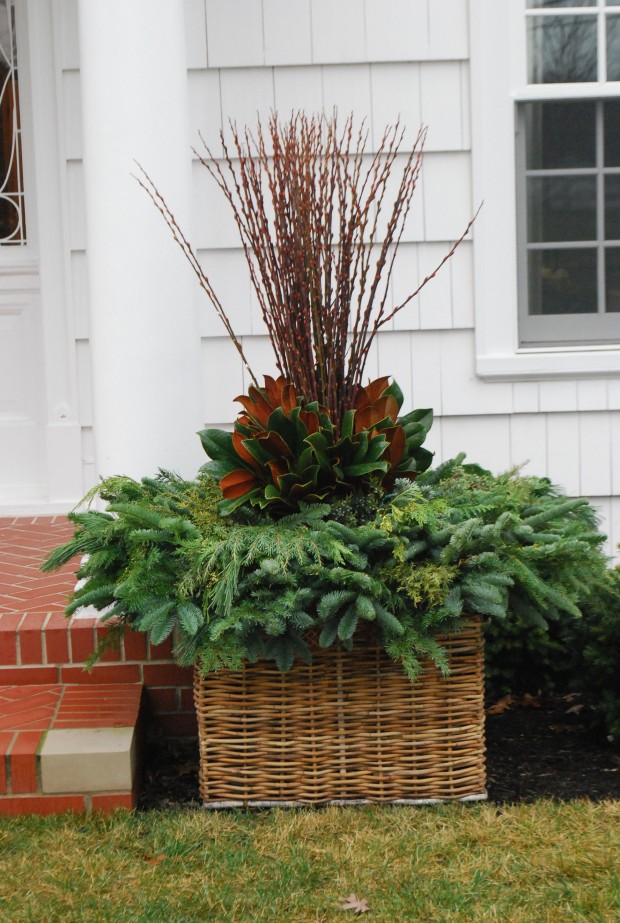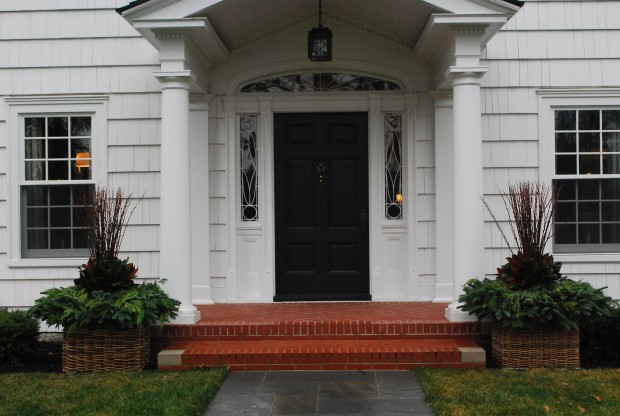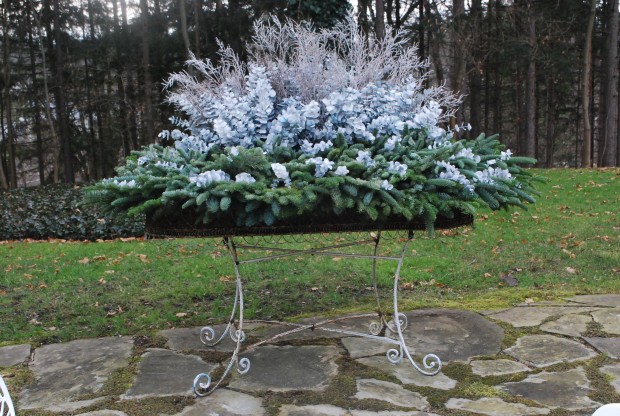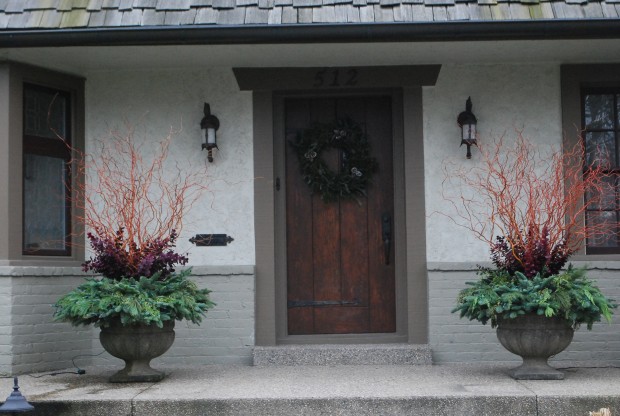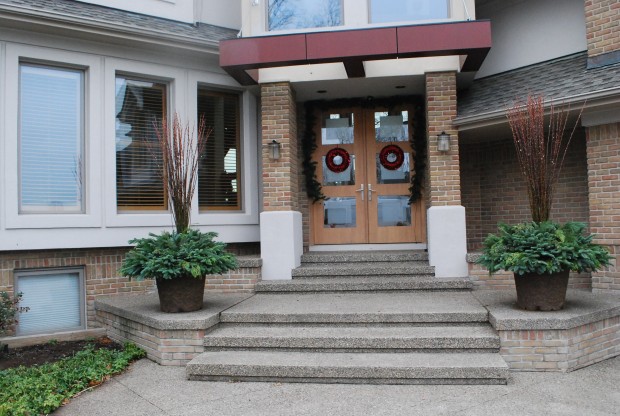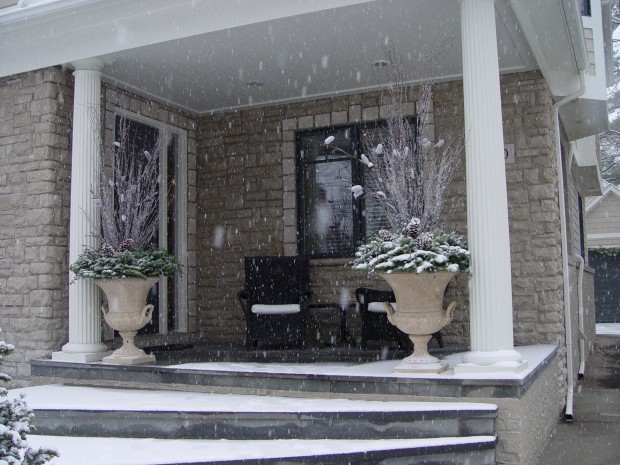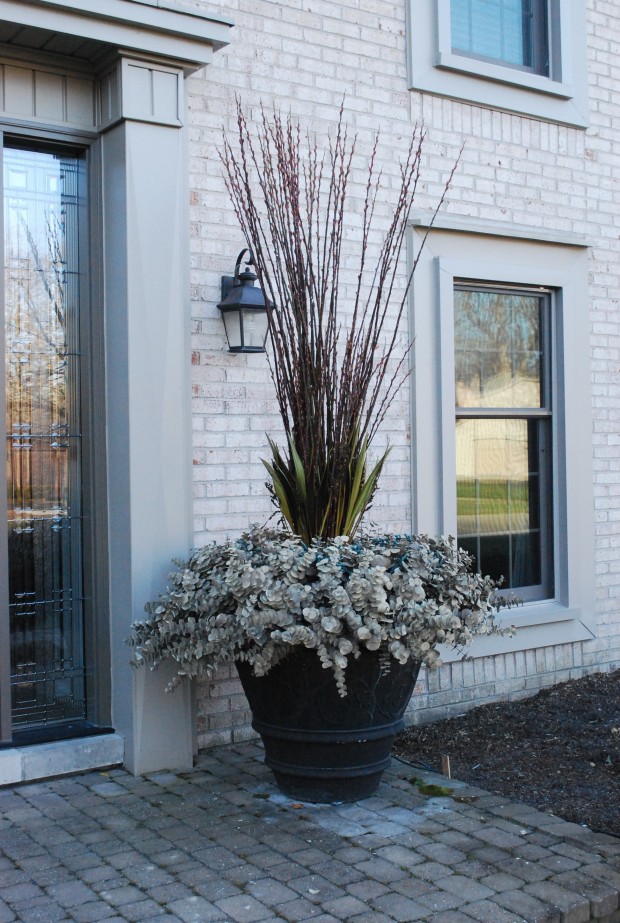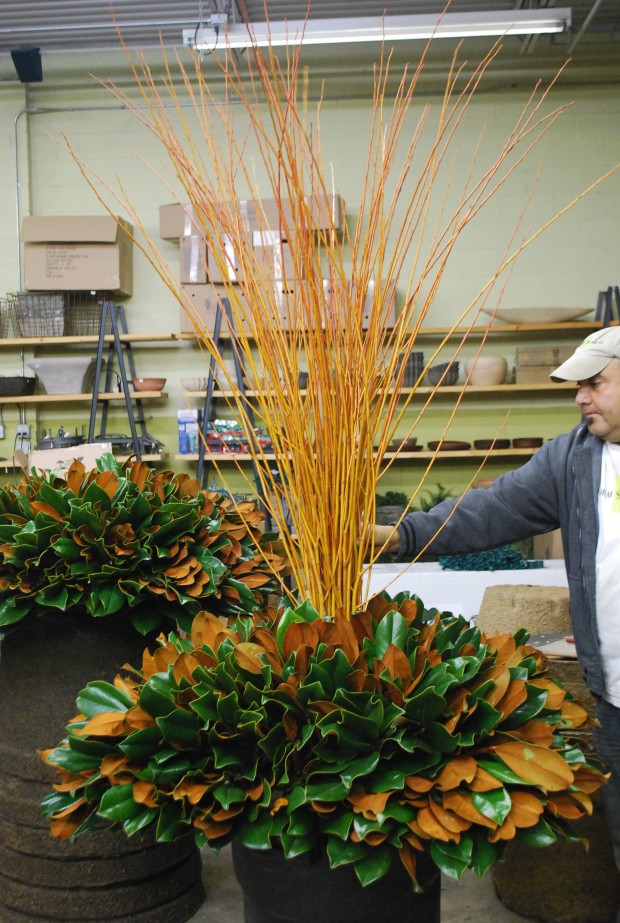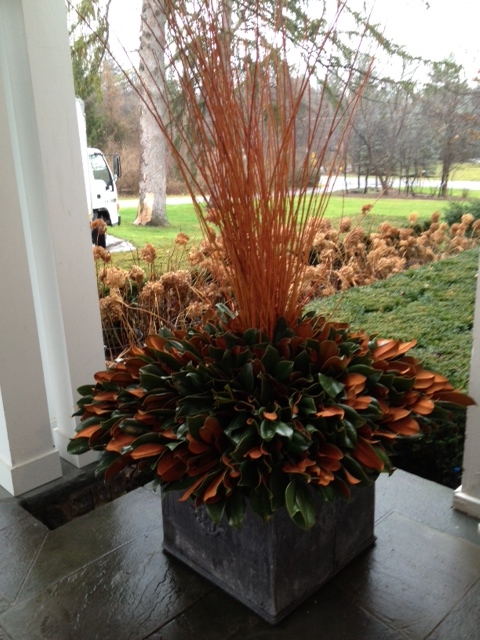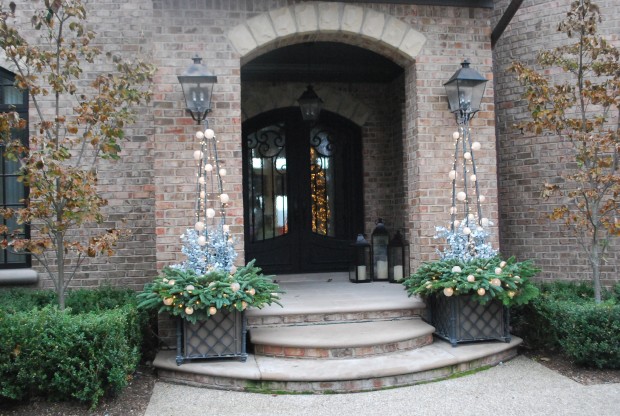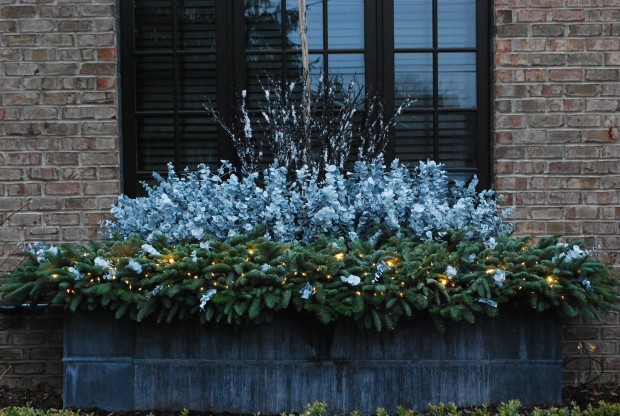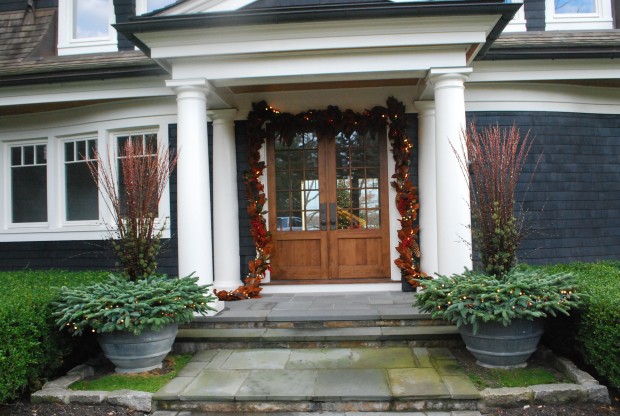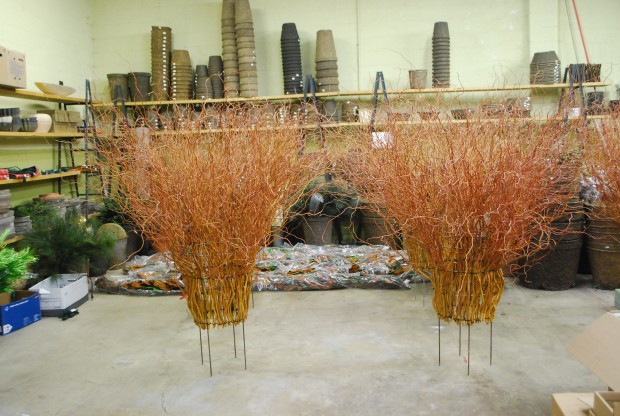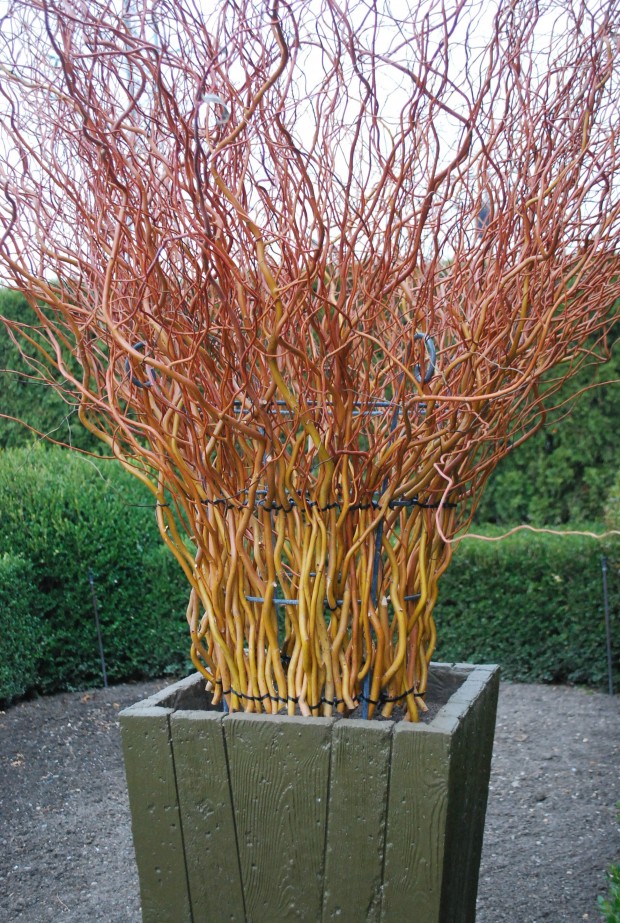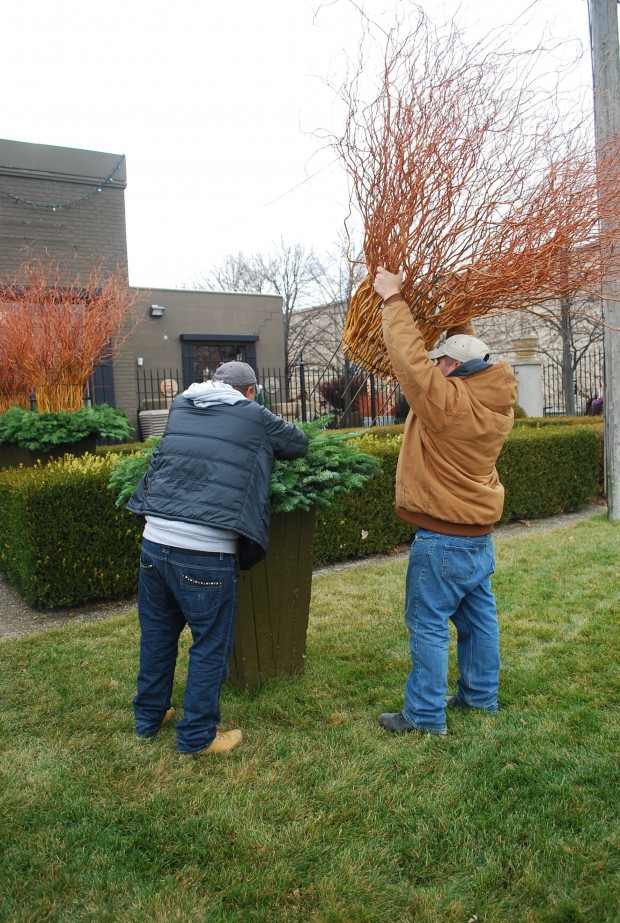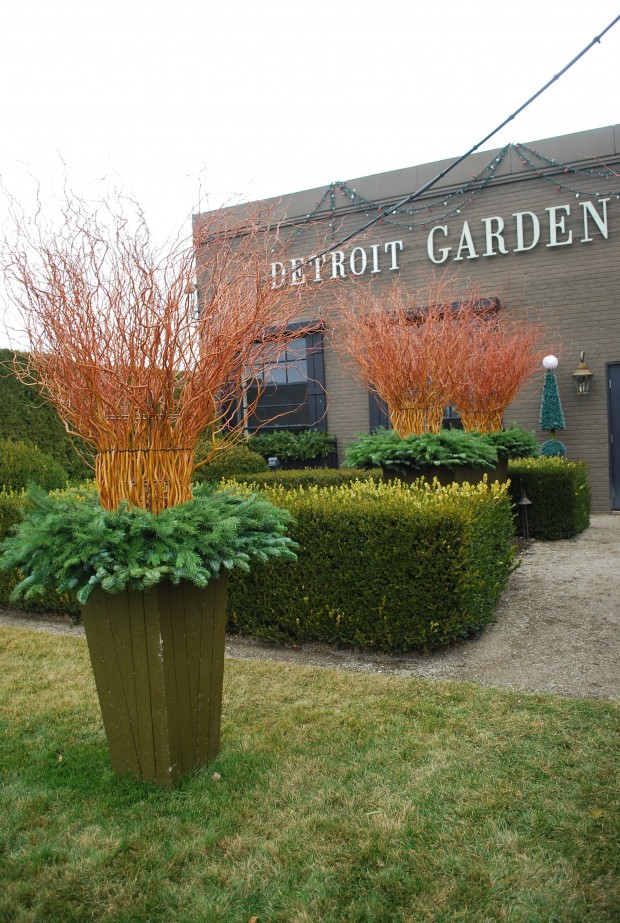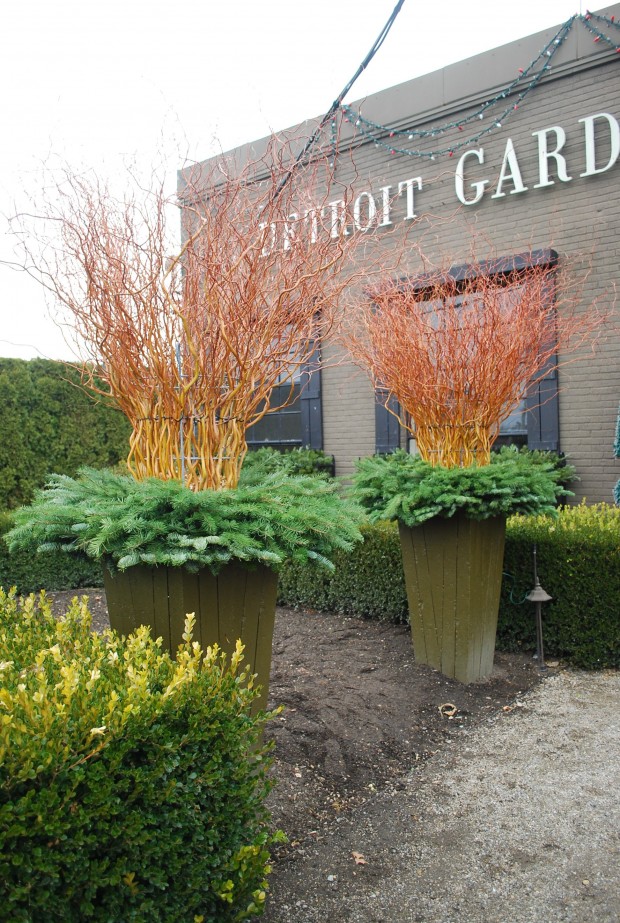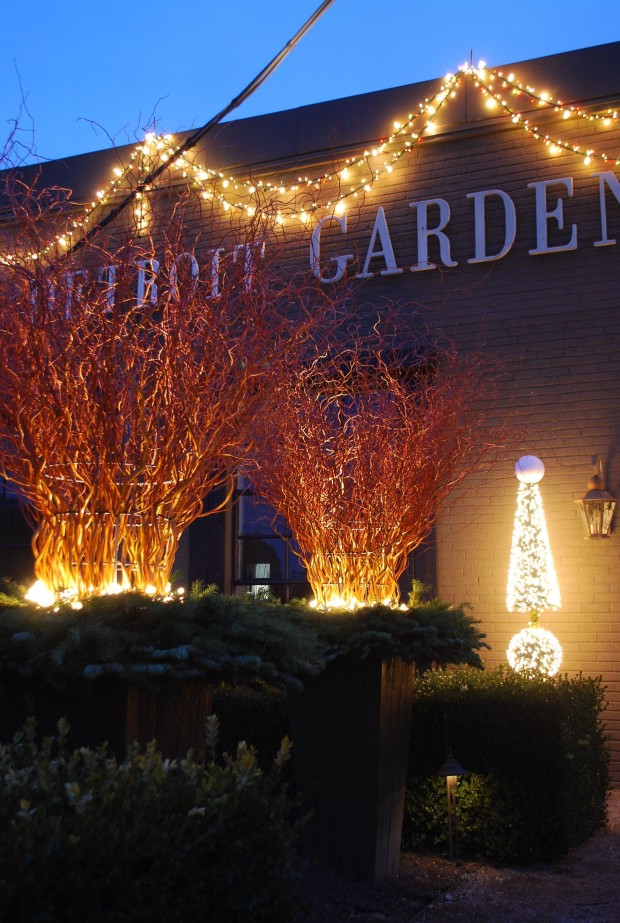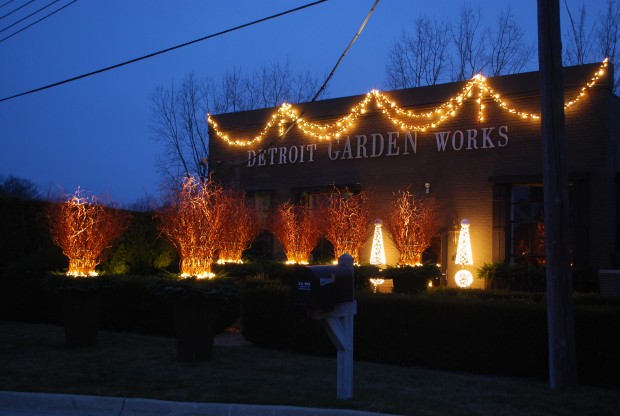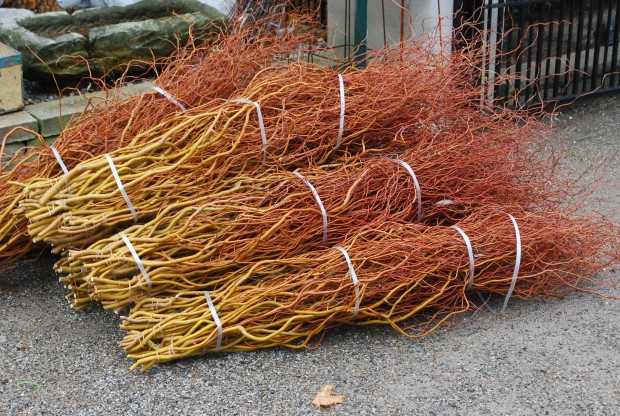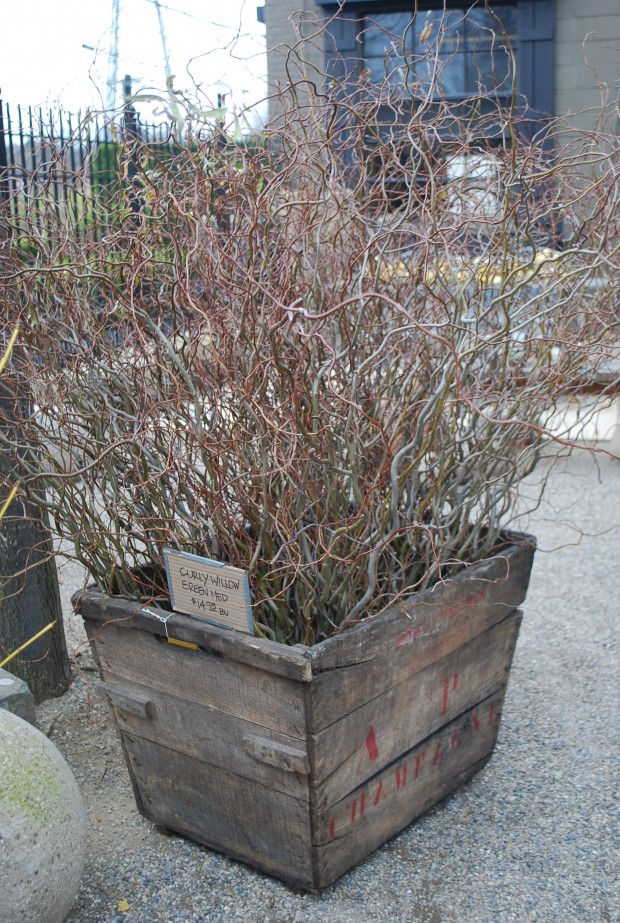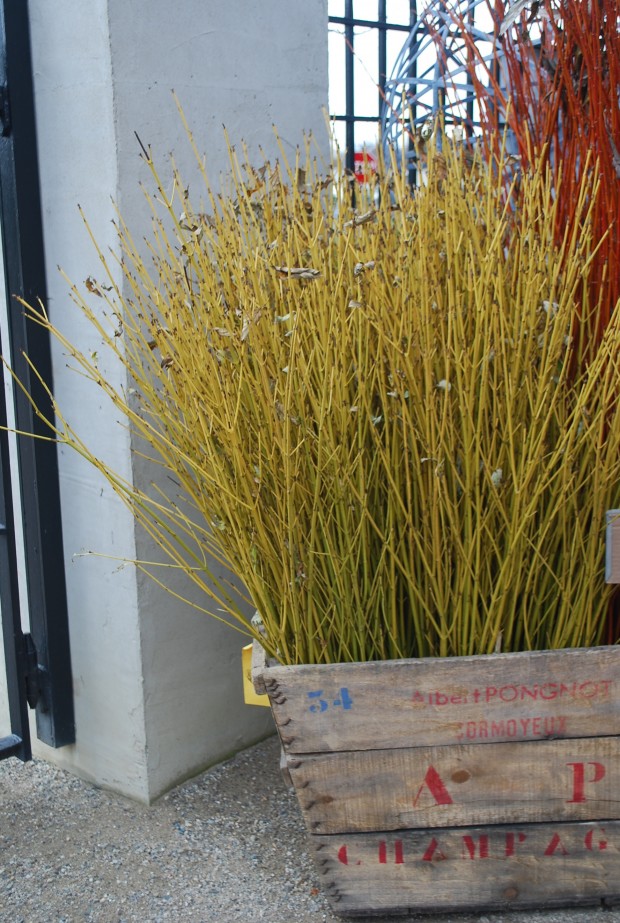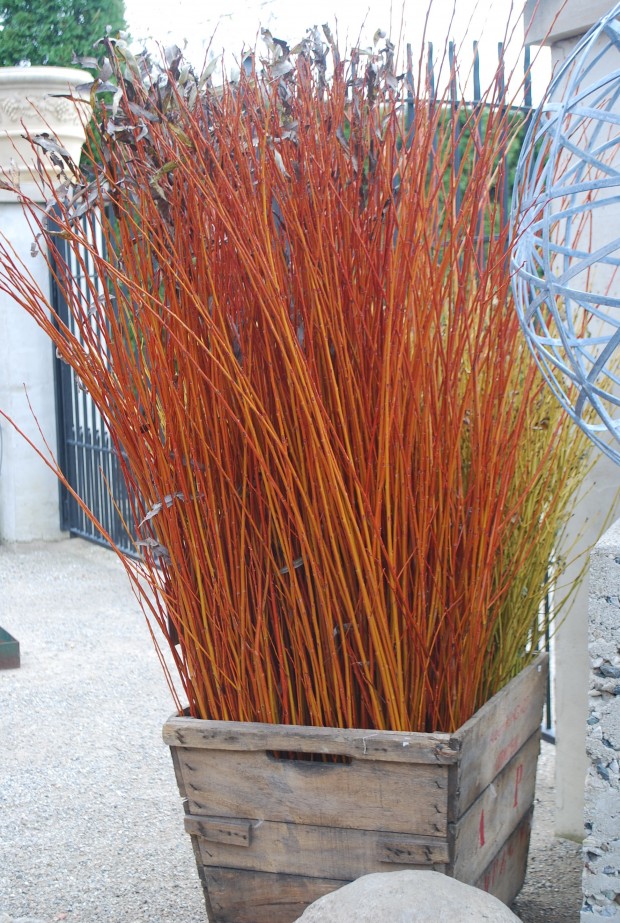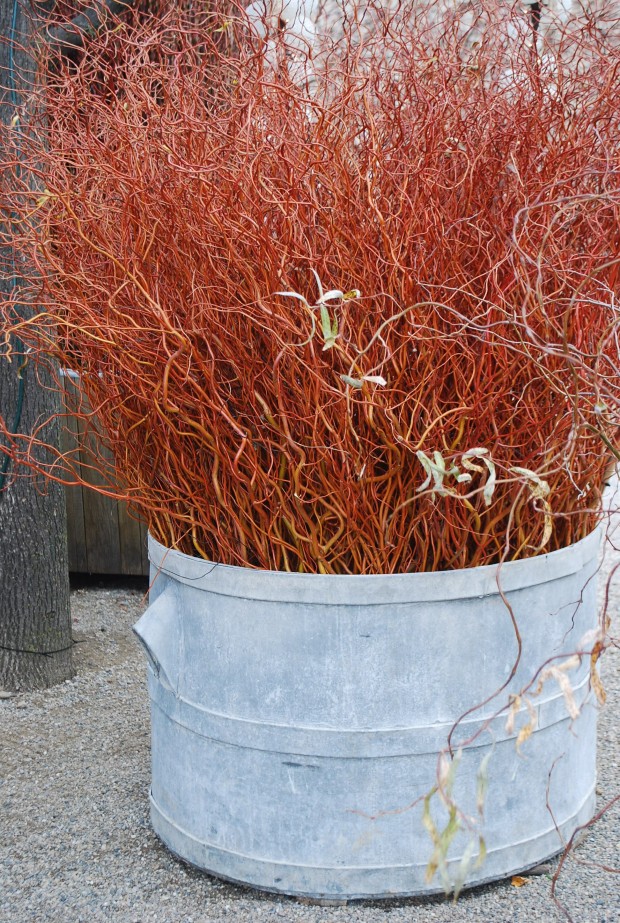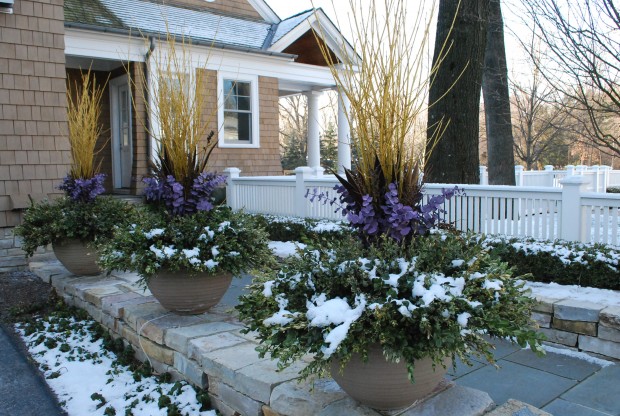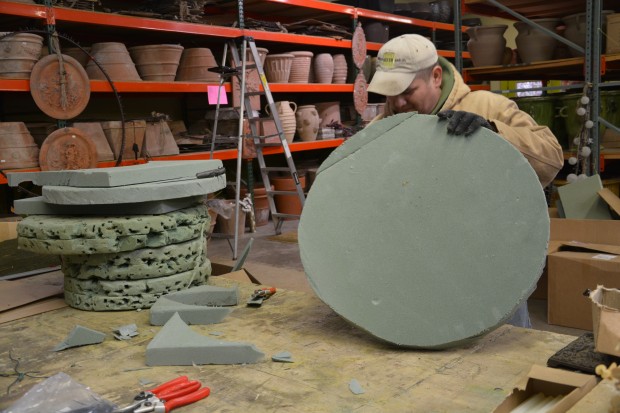 Our late fall weather took a nose dive a few days ago. Just yesterday, it was 15 degrees when I came into work. Bitter cold like that over a period of time can make any soil left in a container turn rock hard. I have had gardeners in, wondering how they will get their winter containers done. We do not stick any of our greens into the soil in a pot. Evergreen boughs installed in the soil have only one direction possible-that is straight up. We build forms from florist’s foam that fit tight into the pot. The foam will stand above the rim of the pot, enabling the placement of greens to the side, and on an angle. Once a form is built, you can reuse it, or patch it. But another great feature of working in foam is the fact that frozen soil is not a problem.
Our late fall weather took a nose dive a few days ago. Just yesterday, it was 15 degrees when I came into work. Bitter cold like that over a period of time can make any soil left in a container turn rock hard. I have had gardeners in, wondering how they will get their winter containers done. We do not stick any of our greens into the soil in a pot. Evergreen boughs installed in the soil have only one direction possible-that is straight up. We build forms from florist’s foam that fit tight into the pot. The foam will stand above the rim of the pot, enabling the placement of greens to the side, and on an angle. Once a form is built, you can reuse it, or patch it. But another great feature of working in foam is the fact that frozen soil is not a problem.
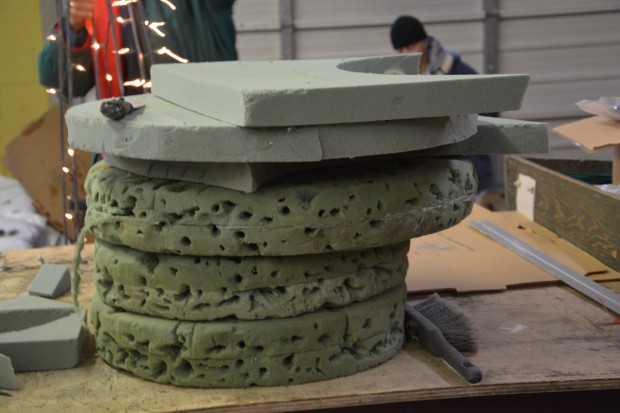 I try to remember to take 4 ” or so of soil out of the pot when doing the fall cleanup. The bottom layer of the foam will sit down into the pot. The top layer gets the evergreen stems. Very large pots may ask for more layers of foam. Given very large pots, or very tall centerpieces, we may wrap the foam with steel wire.
I try to remember to take 4 ” or so of soil out of the pot when doing the fall cleanup. The bottom layer of the foam will sit down into the pot. The top layer gets the evergreen stems. Very large pots may ask for more layers of foam. Given very large pots, or very tall centerpieces, we may wrap the foam with steel wire.
We glue our layers of foam together with hot melt glue. Since the glue cools and sets up fairly quickly, we usually have 2 glue guns going at once. If this sounds like way to much work, we make forms to order all the time.
 There are plenty of variations on this theme. A long window box may ask for 3 forms that can be wedged together upon installation. Odd shaped containers may ask for foam bricks that can be glued up, rather than sheets. Some forms are thicker at the back than the front, if the materials at the back will be heavier in the back. This material enables the actual sticking of the greens to be done indoors. I would dread having to insert branches into half frozen soil when the temperature is much below freezing. This would make the job miserable.
There are plenty of variations on this theme. A long window box may ask for 3 forms that can be wedged together upon installation. Odd shaped containers may ask for foam bricks that can be glued up, rather than sheets. Some forms are thicker at the back than the front, if the materials at the back will be heavier in the back. This material enables the actual sticking of the greens to be done indoors. I would dread having to insert branches into half frozen soil when the temperature is much below freezing. This would make the job miserable.
 Gardeners are routinely victimized by the weather, but in this particular instance, there is no need. Being comfortable means the ability to concentrate on the task at hand, rather than the wind chill. Should you want to move a branch over or up an inch, that adjustment is easy. You can control the angle and direction of the placement with ease. If you make a move you don’t like, you can try a different move.
Gardeners are routinely victimized by the weather, but in this particular instance, there is no need. Being comfortable means the ability to concentrate on the task at hand, rather than the wind chill. Should you want to move a branch over or up an inch, that adjustment is easy. You can control the angle and direction of the placement with ease. If you make a move you don’t like, you can try a different move.
 Much better this mess on the garage floor, than on the front porch. This is easy to sweep up.
Much better this mess on the garage floor, than on the front porch. This is easy to sweep up.
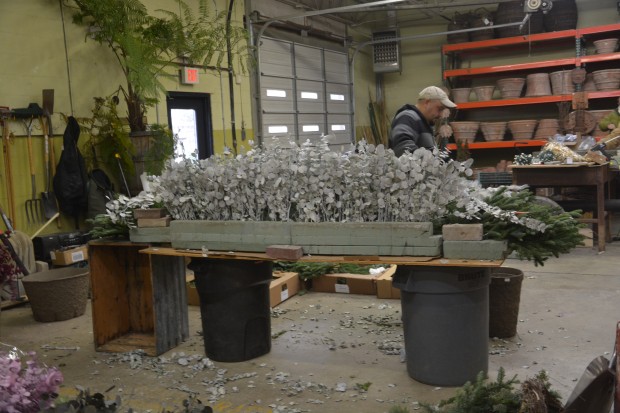 This is the third year for this form. We actually don’t make so many holes in the foam. We sharpen the woody stems of the greens with pruners. This makes for a tight fit. We look at the green topside of a branch to decide on the placement of the next. We do not place the woody stems close together. This helps to conserve material without sacrificing a lush look.
This is the third year for this form. We actually don’t make so many holes in the foam. We sharpen the woody stems of the greens with pruners. This makes for a tight fit. We look at the green topside of a branch to decide on the placement of the next. We do not place the woody stems close together. This helps to conserve material without sacrificing a lush look.
 Transporting an arrangement this large takes some doing. And the heaviest stems or centerpieces are put in once the foam is in place. Once you get the hang of sticking the foam, there will be no stopping you.
Transporting an arrangement this large takes some doing. And the heaviest stems or centerpieces are put in once the foam is in place. Once you get the hang of sticking the foam, there will be no stopping you.
If you haven’t done your winter containers yet, don’t despair. A little simple technology can help make it happen. I did post lots of pictures of winter pots on the Detroit Garden Works facebook page today, should you be interested.



